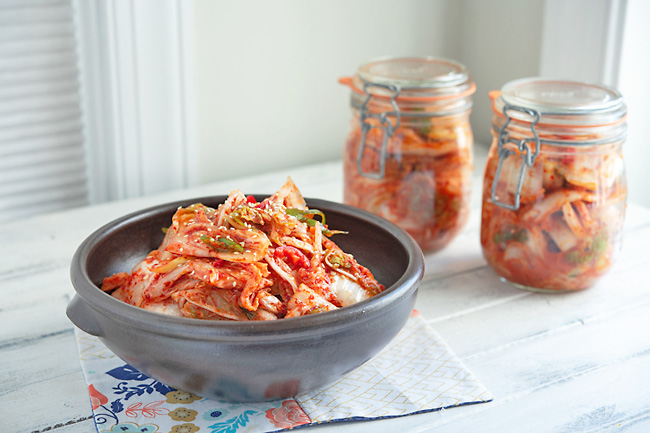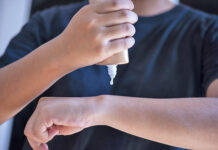Holly Ford
THE KOREA HERALD/ANN – It is a wonderful phenomenon that more and more people around the world are developing a taste for kimchi. That pleasantly pungent, sour, spicy, and perfectly salty taste – with the crisp texture of cabbage – indicates that you have yourself some good kimchi.
Koreans make their cabbage kimchi in different ways depending on the season and the purpose. Cabbage kimchi is perhaps the best known and common kimchi eaten in Korea.
The next common kimchi would be the cubed radish kimchi.
What is kimchi?
Kimchi is a traditional side dish and a staple food in Korean cuisine. A wide variety of vegetables, including napa cabbage and Korean radish, are salted then seasoned with a varying selection of Korean chili flakes (gochugaru), green onions, garlic, ginger, and fish sauce (akjeot or jeotgal).
About 100 different recognised varieties of kimchi are known to exist in Korea, with different regions in Korea boasting their own unique kimchi recipes that use various types of vegetables and methods. Since every Korean household carries its own special family kimchi recipe, traditionally passed down from mothers to daughters or daughter-in-laws, so it is hard to count the exact number of kimchi varieties.

Easy kimchi recipe: Mak kimchi
The word mak is not a proper vocabulary word but it indicates a meaning of “whatever” or “anyway you like.” So as the name says, you can freely cut your cabbage as you like it without following any specific rules. It is an easy kimchi recipe and you can use any ingredients available to make it delicious.
Ingredients
– One head napa cabbage
– One cup Korean coarse sea salt
– One bunch green onion sliced
– Two to three fresh red chili (optional) sliced
For seasoning paste:
– Half large onion diced
– Seven to eight cloves garlic
– One inch ginger peeled and diced
– Half large sweet apple seeded and diced
– Half to two thirds cup Korean chili flakes (gochugaru)
– One tablespoon sugar
– Four tablespoon Korean anchovy sauce
– One tablespoon salted shrimp
– Three tablespoon cooked white rice
– Half cup sea kelp stock or water
Instructions
To salt brine the cabbage:
Cut a three-inch slit through the white stem part of cabbage. Open up the cabbage from the white stem part using your hand. It should open up easily.
Cut additional slits on each cabbage half on the stem and open up again. By doing so, you are quartering the cabbage the Korean traditional way. Rinse the cabbage quarters once to wet them.
Dice cabbage quarters into large chunks. For the large outer leaves, slice them in half lengthwise first, then dice into chunks.
In a large bowl, put in a small layer of cabbage chunks and sprinkle about two to three tablespoons of coarse sea salt over the cabbage. Repeat the process several times, creating layers of cabbage chunks and salt.
Let the cabbage soak for two hours, turning them upside down a couple of times during the soaking. When you bend the white stem part of cabbage, if it bends with a gentle pressure, the brine step is completed. Rinse the cabbage three times in water. Drain the cabbage in a colander, pressing down gently to remove excess water.
To make kimchi seasoning paste
Combine onion, garlic, ginger, salted shrimps, fish sauce, cooked rice (or other choice of starch), and fruit in a blender. Pour in sea kelp stock (or water) to allow the blade to mix the ingredients. (If using fruit nectar, you don‘t need to add stock.) Process everything until smooth.
Pour the puree in a large mixing bowl. Add Korean chili flakes, and mix well. Taste and adjust the seasoning for your liking. Let the paste rest for five minutes, so the chili flakes will get re-hydrated.
To assemble kimchi
Put the drained cabbage in a large mixing bowl. Add leek (or green onion), and fresh chili (if using). The add your kimchi seasoning paste to the cabbage.
Mix well to coat the cabbage with the seasoning paste. (Wear kitchen rubber gloves to protect your hands from getting stained or smelly.)
To ferment and store kimchi
Put kimchi in an airtight glass food storage jar(s). Let it sit in a room temperature for one day (or as long as two days, depending on the temperature). When you see a gas foaming and air bubbles appear, transfer your kimchi to the refrigerator and store it for four to five days before you serve.
It will last in the fridge for up to two months.



















































